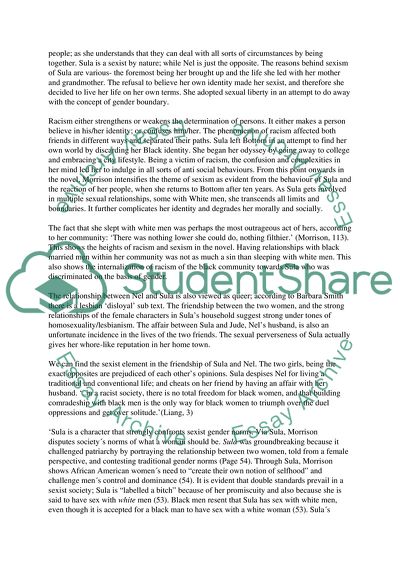Cite this document
(“Racism and Sexism in Sula Research Paper Example | Topics and Well Written Essays - 1750 words”, n.d.)
Retrieved de https://studentshare.org/literature/1574060-racism-and-sexism-in-sula
Retrieved de https://studentshare.org/literature/1574060-racism-and-sexism-in-sula
(Racism and Sexism in Sula Research Paper Example | Topics and Well Written Essays - 1750 Words)
https://studentshare.org/literature/1574060-racism-and-sexism-in-sula.
https://studentshare.org/literature/1574060-racism-and-sexism-in-sula.
“Racism and Sexism in Sula Research Paper Example | Topics and Well Written Essays - 1750 Words”, n.d. https://studentshare.org/literature/1574060-racism-and-sexism-in-sula.


